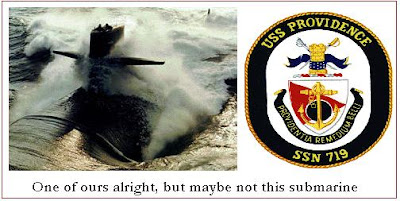 UPDATE (11-11-2008)In principle it could have been activated by cigarette smoke, Chairman of St. Petersburg submariners club, Capt (retired) Igor Kudrin was quoted as saying by 'Moskovsky Komsomolets' daily. Since it is very difficult to control civilians, may be one of them, instead of waiting for his turn to go to smoking room, lighted cigarette near a safety gauge. No one should board a submarine without a portable breathing apparatus. Crew members literally sleep in them
UPDATE (11-11-2008)In principle it could have been activated by cigarette smoke, Chairman of St. Petersburg submariners club, Capt (retired) Igor Kudrin was quoted as saying by 'Moskovsky Komsomolets' daily. Since it is very difficult to control civilians, may be one of them, instead of waiting for his turn to go to smoking room, lighted cigarette near a safety gauge. No one should board a submarine without a portable breathing apparatus. Crew members literally sleep in them, former Northern Fleet Commander Vyacheslav Popov told Interfax. -
source. Well, that may finally explain
these objects, then.
What submariners learned in sub school, even in the days of the early nuclear subs:
Phosgene can be created is by passing a freon through lit cigarettes, cigars or pipes. Phosgene gas was used as a chemical weapon in WW1. It is an insidious poison with little detectable odor and late appearing symptoms. The gas can only be detected at 0.4 ppm, which is 4x its Threshold Limit Value. Its high toxicity is due to reaction of phosgene gas on proteins in the lung. Damaged alveoli disrupt blood – air exchange causing suffocation.
Then, in 1984:
In Bhopal, India 43 tons of methylisocyanate was accidentally released at a Union Carbide plant, killing or injuring tens of thousands of people. Phosgene was a suspected component of the leak.
And Post 9-11:
Freon R-22, Hydrogen Fluoride & Phosgene samples were taken at WTC. (no detectable levels)
In addition to the toxic effects of phosgene (especially for any smoking shipyard technicians or engineers on the K-152 Nerpa), which must still be questioned, we have intriguing clues from official sources and other authorities. Each theory generates at least half a dozen more questions. Only a few questions have been asked below:
The generally accepted theory is that a leak of
hydrogen peroxide (H2O2) in the forward torpedo room of K-141 Kursk in August 2000, led to the detonation of a torpedo warhead. Hydrogen peroxide vapors can form sensitive contact explosives with hydrocarbons (lubricating oils and such greases). Possible reactions of H2O2 include spontaneous ignition of other compounds. Question:
Did a H2O2 leak cause a legitimate and intentional triggering of fire suppressant on the K-152? Or, was there really a false alarm, erroneous release? -
False alarm blamed for Russian submarine deaths source -
Los Angeles TimesOr, was there really a false alarm, or system malfunction?
Russian submarine accident blamed on fire system malfunction source - RosBusinessConsulting
G
Poor training behind Russian sub deaths: ex-officer
About two thirds of the 208 people on board the submarine were civilians checking the vessel before handing it over to the navy for active service. Civilians accounted for 17 of the 20 dead.
G
'Since it is quite a rare alarm, they could have assumed it was some kind of different alarm,' said Capt. Alexander Nikitin, who monitors nuclear safety in Russia for Bellona. Nikitin said
everyone on board the vessel would have had access to breathing apparatus.
'Most likely, they did not use it according to the procedures or as they were supposed to.' ...
'These are not military people who strictly follow instructions.'
source - The Washington Post
The most suspicious fact yet may be this: Why were so many civilians (about two thirds of the 208 people) aboard in the first place? Only a very new or complex technology would require so many watchers.
G
There are 21 people currently being treated in hospital. The rest of the crew are being examined," Alexander Kostenko, deputy governor of Primorsky Krai, said on Channel One television.
Russian newspapers said the submarine was only intended for a crew of 73 and that there were 208 people on board during the tests. The Kommersant daily quoted navy personnel saying
there may not have been enough oxygen masks. [color emphasis mine]
source - Breitbart.com
Were there actually not enough oxygen masks, then? Have we ever before seen shortages of critical equipment in Russia?
G
India set to pay more for Russian submarine
India might well have to pay another $2 billion to get Gorshkov by 2012. Already, there are indications that a part of the huge cost escalation could be linked to Russia demanding more for Nerpa over the initial $650 million. source -
The Economic Times The accident, whatever its cause, is an automatic bargaining tool for India. Why would the India agree to pay more now?
G
US nuclear sub enters Japanese territory 'without notice'
'The Japanese government regrets the visit by the Providence without prior notice,' Japanese foreign ministry Deputy Press Secretary Yasuhisa Kawamura said, adding that US embassy Deputy Chief of Mission James Zumwalt in reply expressed regret over the incident and explained it was due to miscommunication in the US navy. A US embassy spokesman declined comment.
source - The Times of India, etc.
No wonder official comment was declined; locations of unmarked submarines [USS Providence (SSN-719)], in foreign waters are rarely disclosed.
Was it really SSN-719? [Rhetorical question - don't answer, this one, please]. M.E. thinks it was another sub.
more here. Hmmm!.
G
Submarines are always silent and strange.
Labels: 9-11 Kursk K-141 Nerpa K152 India Japan Russia SSN-719 USS Providence
 UPDATE (11-11-2008)
UPDATE (11-11-2008)

0 Comments:
Post a Comment
<< Home